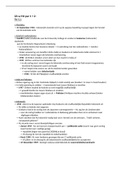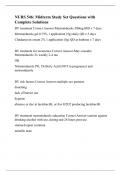Samenvatting
Samenvatting van alle artikelen van Medische sociologie, 2024
- Instelling
- Rijksuniversiteit Groningen (RuG)
Dit is een samenvatting van alle artikelen van Medische sociologie (dus niet van het boek, die verkoop ik overigens wel). Het is geschreven in de taal van de artikelen zelf, dus sommige artikelen zijn in het Engels geschreven en sommige in het Nederlands. Deze artikelen zijn: - Understanding healt...
[Meer zien]











